Your Complete Guide To Litchfield National Park, Australia
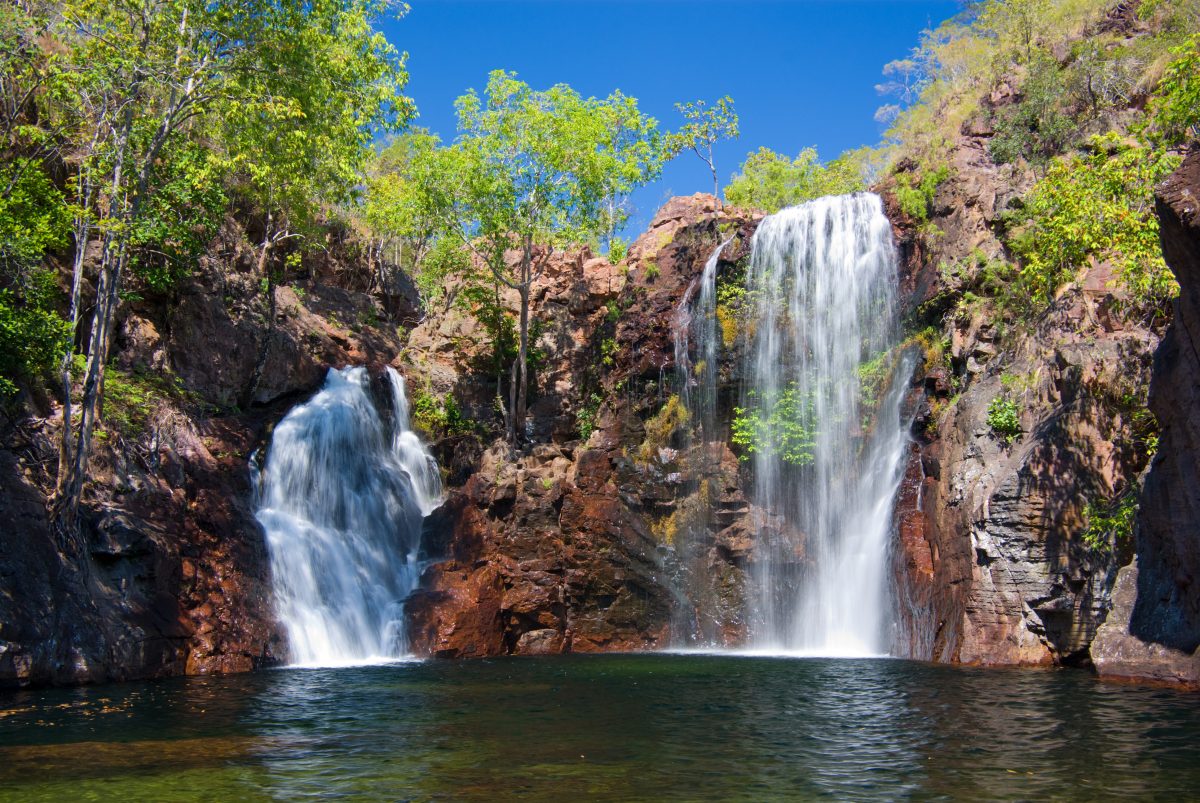
If you’re visiting the Northern Territory of Australia, then Litchfield National Park is a must-see.
Though this park is less popular than Kakadu, its stunning and contrasting landscapes certainly give you all the reasons you need to pay it a visit. And if you’re really adventurous, you can go deep into the most remote areas of the park to uncover the stunning sights without anything manmade to spoil your view. It’s the remoteness, the history, and the outdoor activities that make this park an irresistible stop on your travels. And once you’ve experienced it, you’ll understand why it draws so many visitors and is one of Australia’s most important parks.
The Lowdown on the Litchfield National Park
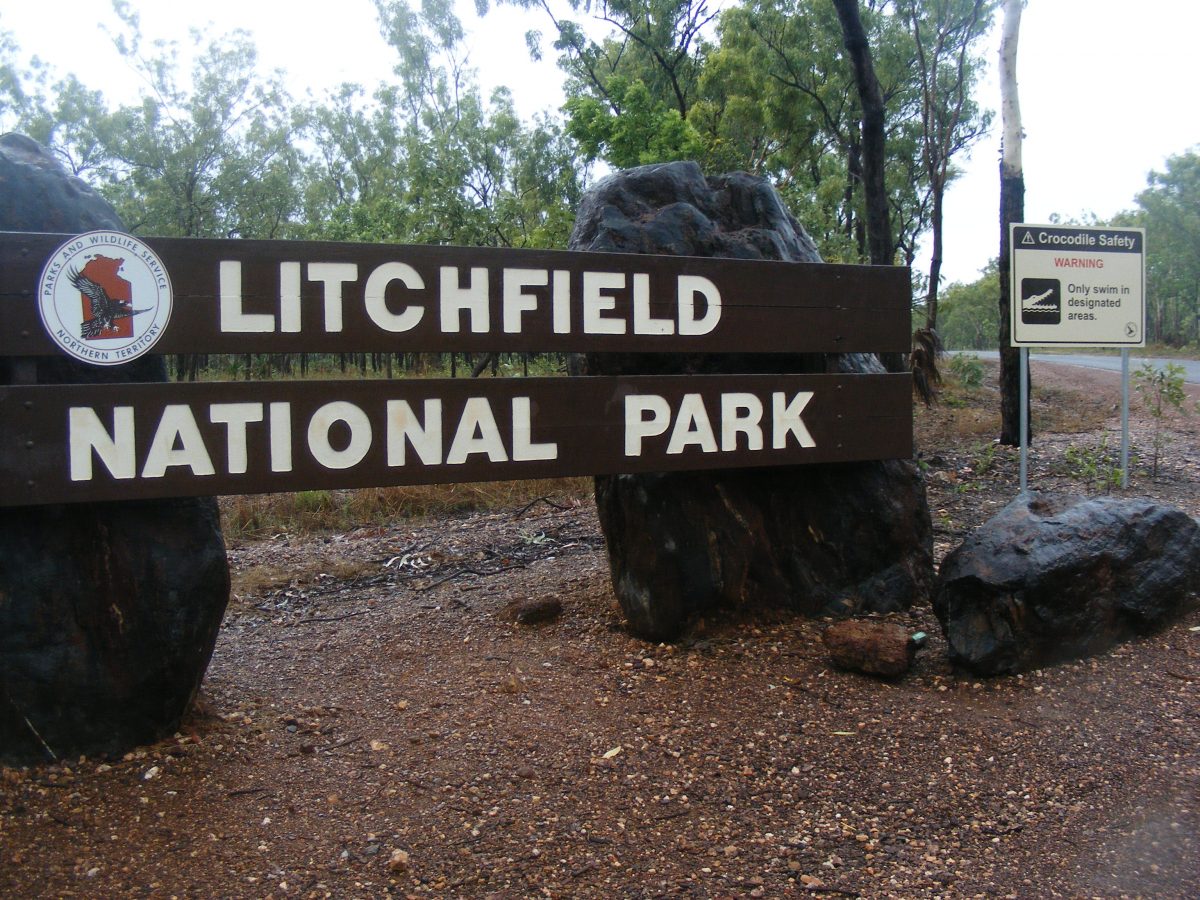
Photo by Andrew Finegan on Wikicommons
Litchfield National Park is located in the North of Australia, in the Northern Territory. You can access the park easily from Darwin or Katherine and even camp there if you want a more rugged experience. The park covers an area around 1500 square kilometers and has been home to the Aboriginal people for thousands of years.
The park contains stunning waterfalls, striking sandstone pillars, crystal pools, and iconic magnetic termite mounds. It’s a great place to hike too, with lots of interesting walks leading from the most popular attractions. You can also swim under the falls and in pools throughout the park, which makes up for the heat that this part of Australia often experiences.
How to Get There
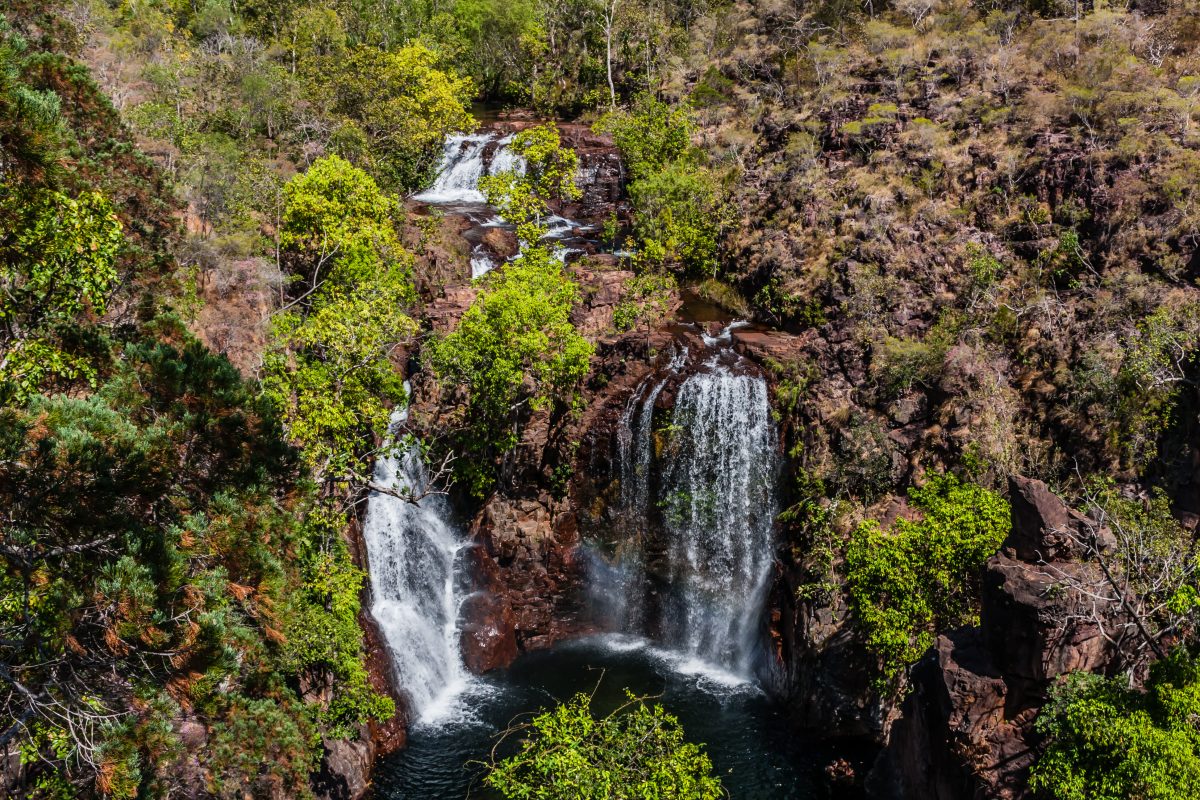
©Photo by Walter_D on Adobe Stock
You can get to the Litchfield National Park on your own or as part of a tour. If you prefer to drive from Darwin, the capital of the Northern Territory, the journey is about 120 kilometers southeast. Follow the Stuart Highway to the town of Batchelor and turn right. From there, it’s a short road to the main entrance. This is a very popular route because unlike other roads it’s paved all the way.
If you want to go to the Northern entrance, then stay on the Stuart Highway for 57 kilometers and turn right in Berry Springs. You will see a sign for the Territory Wildlife park at the correct turn-off. Follow the road for 58 kilometers to the northern park entrance. This road is a little more rugged as it isn’t sealed for around 42 kilometers. This means that it may be inaccessible during and after the wet season.
You can also access the park from the south on the Daly River Road. This road is for four-wheel drives only and is closed during the wet season.
The Best Time to Visit the Litchfield National Park
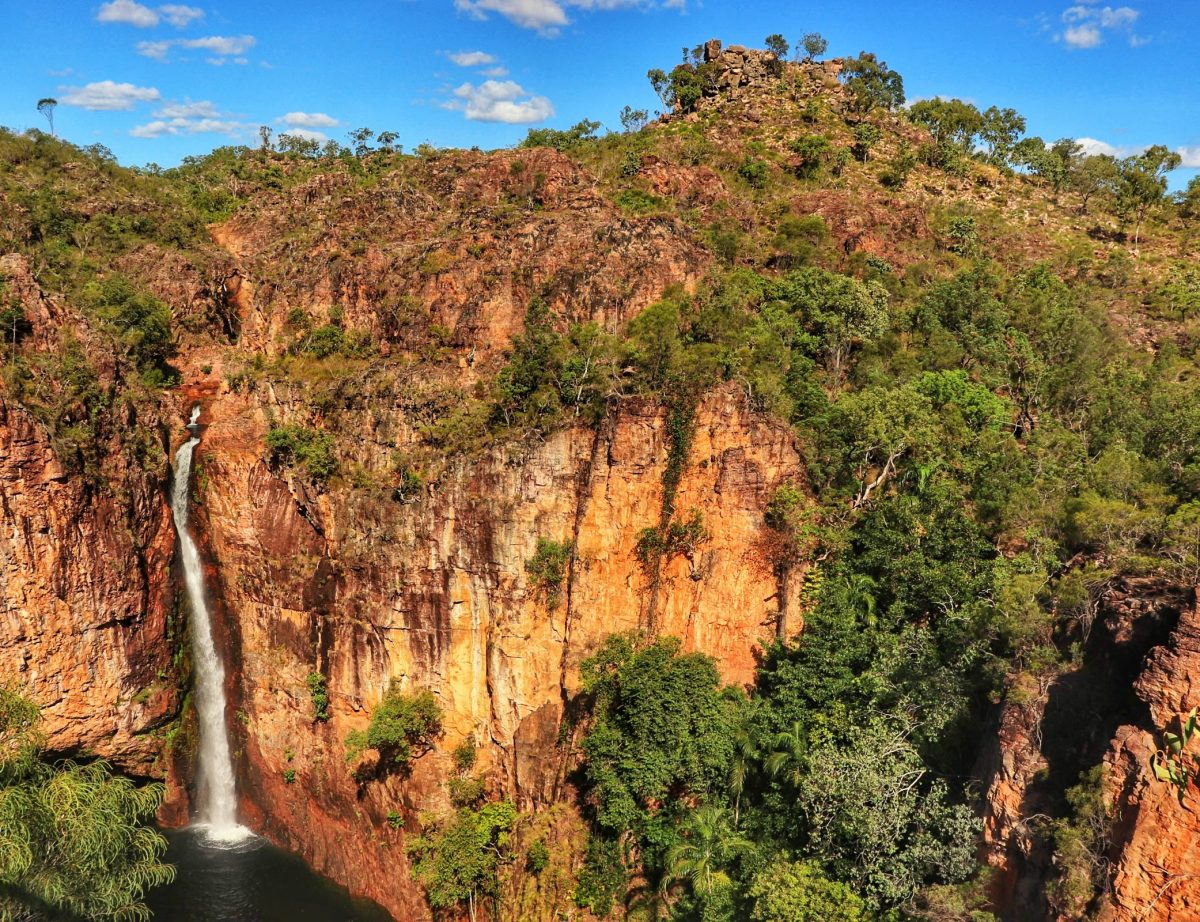
©Photo by Georgel.pcs on Wikicommons
The Northern Territory is unusual in that it only has two basic seasons. The temperatures are fairly steady year-round, so the seasons are based on the rainfall. The wet season is between November and April and the dry season is May to October. It’s the differences between these two seasons that dictate when you should visit the Litchfield National Park.
You can visit the Litchfield National Park at any time of year via the main road. However, if you’re traveling on other roads, then you need to try to avoid the wet season. The heavy rainfall at this time of year means that the unsealed roads leading to the park may be closed. Some attractions are closed at this time of the year as well. This usually includes the Surprise Creek Falls, the Lost City, and Tjaynera Falls.
You might think that the park should be avoided completely in the wet season, but some attractions are even more amazing at this time of year. Wangi and Florence Falls are simply incredible when bloated with all this water. So, if you want to see them at their best, this is the time. The Litchfield National Park gets busier during the dry season, with peak times between June and August. If you can avoid these peak months, then you will enjoy a more remote, personal experience at the park.
Tickets and Opening Hours of Litchfield National Park
Litchfield Park is open year-round, and entry is free. However, certain parts of the park will close during the wet season because of the heavy rain. If you particularly want to see areas like the Lost City or other attractions off the beaten track, then you will need to choose your time of year carefully.
Though camping is permitted in the Litchfield National park, travelers require to pay a small fee at most camping sites. However, there is a fair amount of accommodation options located just outside of the park if you’d like running water and someone to cook for you.
Once you’ve decided how to get there and when it’s time to decide what to see.
Hike For The Iconic Florence Falls
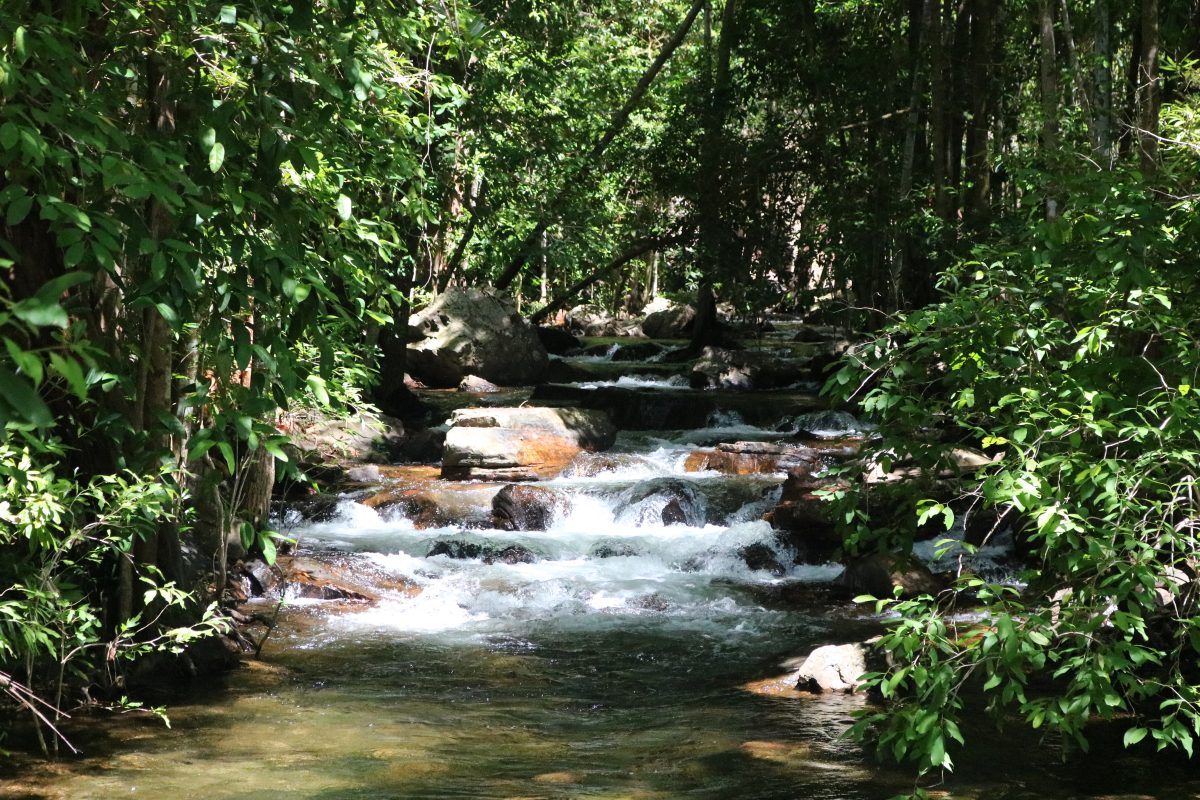
©Photo by Warren Poole on Wikicommons
Litchfield National Park’s Florence Falls are set in a pocket of monsoon rainforest. The waters are crystal clear and offer a viewing platform far above for panoramic views of the valley and the waterhole. This attraction is easily accessible, within a couple of minutes from the car park.
To get to the falls you can take the easy, 3-minute walk or stretch your legs and take the gorge rim walk for an excellent overhead view of the falls. It makes quite a stunning sight set against the lush rainforest. Once you reach the plunge pool, go for a swim to cool off. You can also take the Shady Creek Walk, which will loop you along a stream, through the rainforested gorge, and then through the woodlands back to the falls. Take a picnic with you if you want to enjoy a meal in these serene natural surroundings.
The Tabletop Track
The Litchfield National Park offers lots of great walking tracks, none more beautiful than the Tabletop track. This is a long-distance track that will take you along some of the park’s most stunning natural areas. You’ll hike through creeks, past beautiful waterfalls and swimming holes, and through savannah woodlands with beautiful views all the way along.
This walk is fairly intensive, and you will need to be fairly fit to do the whole thing. It’s 39 kilometers or 50.0 miles long and can be reached via several short links walks. These shorter walks can be accessed at Walker Creek, Florence or Wangi Falls, and Greenant Creek. There are three main sections of the walk. The first is from Wangi to Walker Creek, then from there on to Tjenya Falls, and concluding at Walker Creek.
Wangi Falls
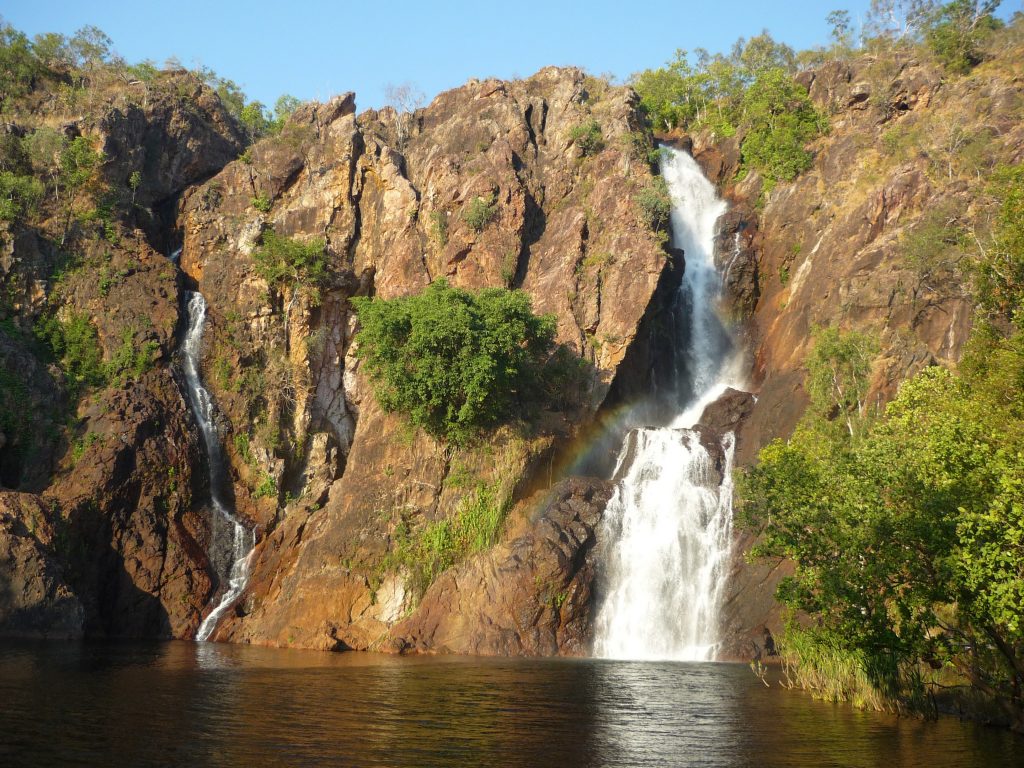
By Carole Mackinney – Provided by Author, CC0,
Wangi Falls is a beautiful, easily accessible area that offers pristine natural beauty. It’s also one of the most popular attractions in the Litchfield National Park. The roads to this attraction are easy to traverse and there’s a lovely picnic area, kiosk, and camping area near the falls.
There’s a lot to do in this part of the Litchfield National Park. Go swimming under the waterfall, take advantage of the barbecues to make a meal, or try one of the walking tracks. There are various tracks from the falls that will take you to other beautiful parts of the park or just allow you to see more of the immediate area. Just be aware that the pools can be dangerous to swim in during the wet season when they’re swollen with water.
Tjaynera Falls at Sandy Creek
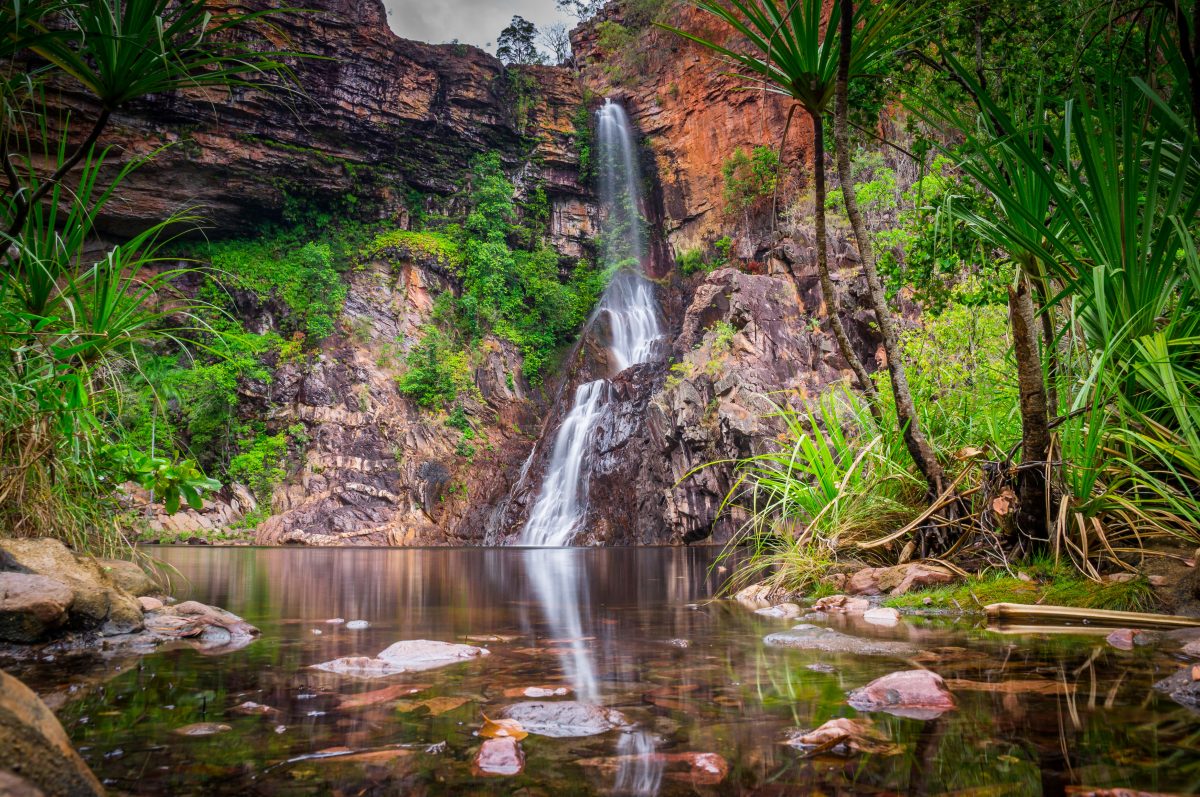
©Photo by Julian Peters on Adobe Stock
If you’re looking for some peace in the Litchfield National Park, then head out to the Tjaynera Falls, often called the Sandy Creek Falls. From the nearby carpark, it’s only a 1.4-kilometer walk through the open valley to the base of the falls. The car park is only accessible by four-wheel drive, so you’ll probably have them falls to yourself during your visit.
This is the best place to visit for a peaceful, relaxing time in nature. Make sure that you take a picnic with you so you can eat with the stunning views of the valley in front of you. And afterward, you can take a swim in the pool to wash the sweat off your skin. There are also campground facilities in the area if you want to spend some more time in these idyllic surroundings.
The Lost City
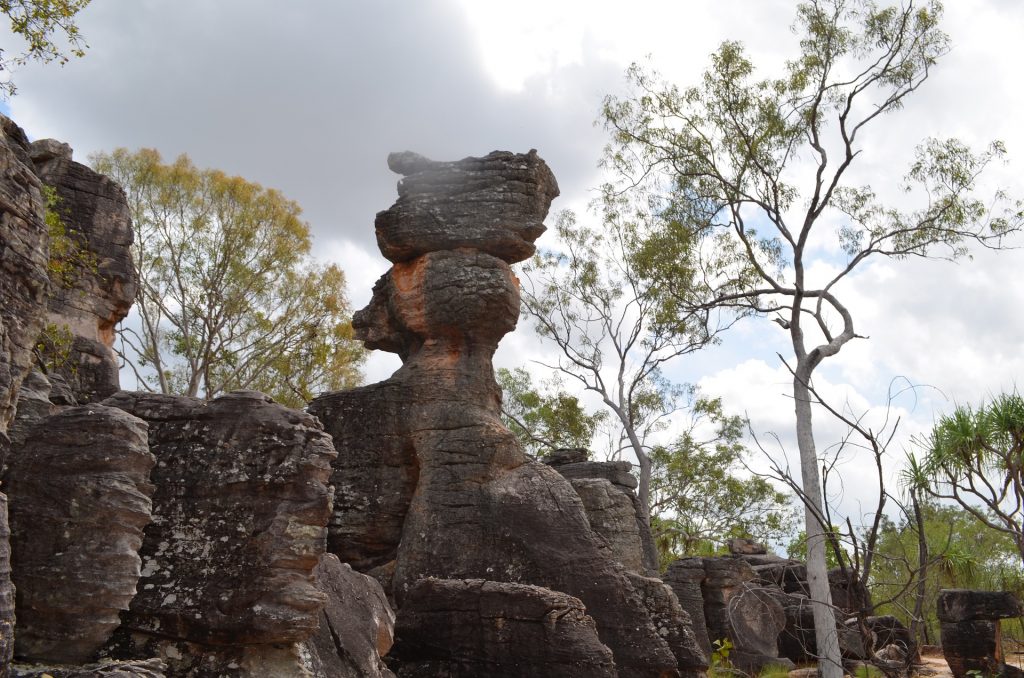
Image by Mat Fleming from Pixabay
The Lost City is like the remnants of some forgotten civilization. They’re a series of sandstone outcrops that are a stunning sight against the stark landscape of the Litchfield National Park. They can be hard to access, and you’ll need a four-wheel drive, but the sheer age of the site makes it well worth the trip.
The track out to the Lost City is around 8-10 kilometers of rugged, difficult landscape and it’s often closed in the wet season. Only experienced drivers should make the trip, so hire a guide if you’re a little unsure. Once you’re there, you’ll be surprised at how deliberate the structures look as if they were deliberately carved. And you’ll be able to touch a sandstone wall that’s estimated to be around 500 million years old.
Magnetic Termite Mounds
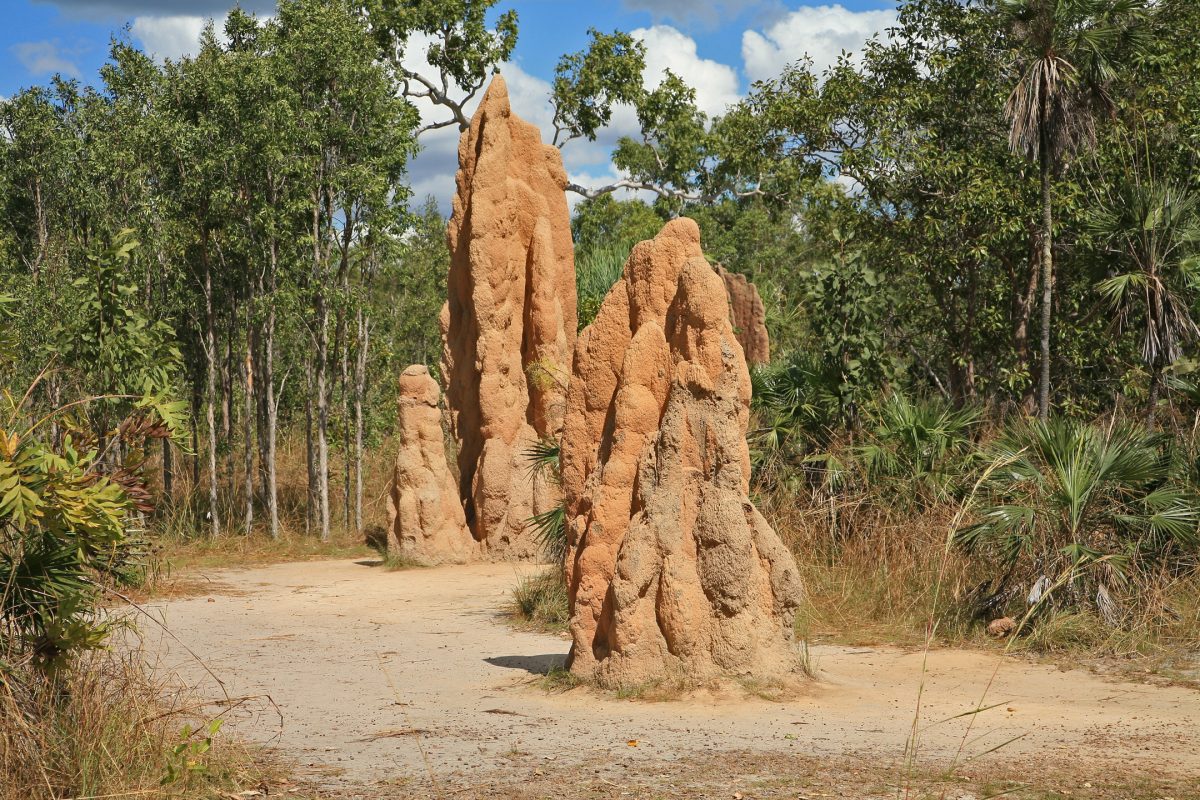
©Photo by W. Bulach on Wikicommons
Visiting termite mounds doesn’t sound like the most interesting activity. But in fact, these are a must-see in the Litchfield National Park. There are hundreds of the mounds standing up to 2 meters high in otherwise empty ground. Some of them are up to 100 years old and they’re unique to northern Australia.
The termites that make the mounds are magnetic, so they’re basically gigantic compasses. The thin edges of the mounds point north-south and the broad backs are east-west to minimize sun exposure and keep the ants cool. This makes them perfect, natural compasses. The mounds can be found around 17 kilometers from the eastern boundary of the park. If you head to the viewing area in the northern part of the park, you’ll also get to see the 4-meter-high Cathedral Termite Mounds. And there’s an information shelter close by if you want more information about the site.
The Blyth Homestead
If you enjoy a bit of history with your travels, then you should see the Blyth Homestead while you’re in the Litchfield National Park. It was built by the Sargent family in 1929 and eventually sold to the government in 1985. The home was located near an old tin mine and shows just how hard life was for those early pioneers. It’s a little hard to access even today, and you will need to join a tour or get there by four-wheel drive.
This site is a sobering reminder that life in the 21st century is much easier than in the previous year. The house has recently been restored and an interpretive display installed to illustrate the trials and tragedies of the family who lived in the house.
Go For An Excursion At The Caravan Park
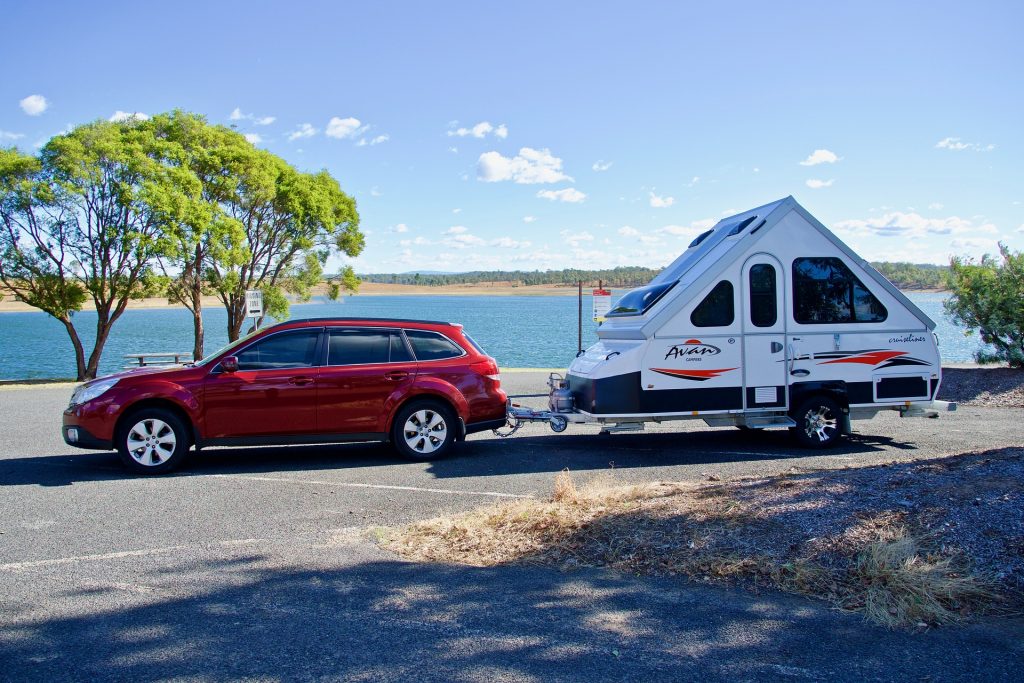
Image by Siggy Nowak from Pixabay
There is only one spot in the Litchfield National Park where you can take your caravan and that’s at Wangi Falls. There are no powered sites provided at the falls and the facilities are fairly basic. However, there are several caravan parks outside of the National Park that provides good facilities very close to the park entrance.
There are very few shops or kiosks in the park, so the caravan sites nearby are a great place to get food or a cold drink. There are several around including the Banyan Tree Caravan Park and the Litchfield Tourist Park, which is the closest to the Litchfield National Park.
Go Camping in Litchfield National Park Campsite
Sometimes, just spending a day in the Litchfield National Park isn’t enough. If you want more time to enjoy the outdoors, then consider camping in the park. There’s nothing like putting up your tent and enjoying the warm night air with an expansive, star-studded sky above you. And that’s exactly what you’ll find in the Australian outback, where there’s almost no light pollution to block your view of the night sky.
You can camp at Florence Falls, the Buley Rockholes, and at Wangi Falls. There are also four-wheel drive camping areas at Surprise Creek Falls, Florence Falls, and Tjaynera Falls. Most of these sites are quite basic and even the areas that allow caravans don’t provide power. The camping fees can be paid on site.
Buley Rockhole
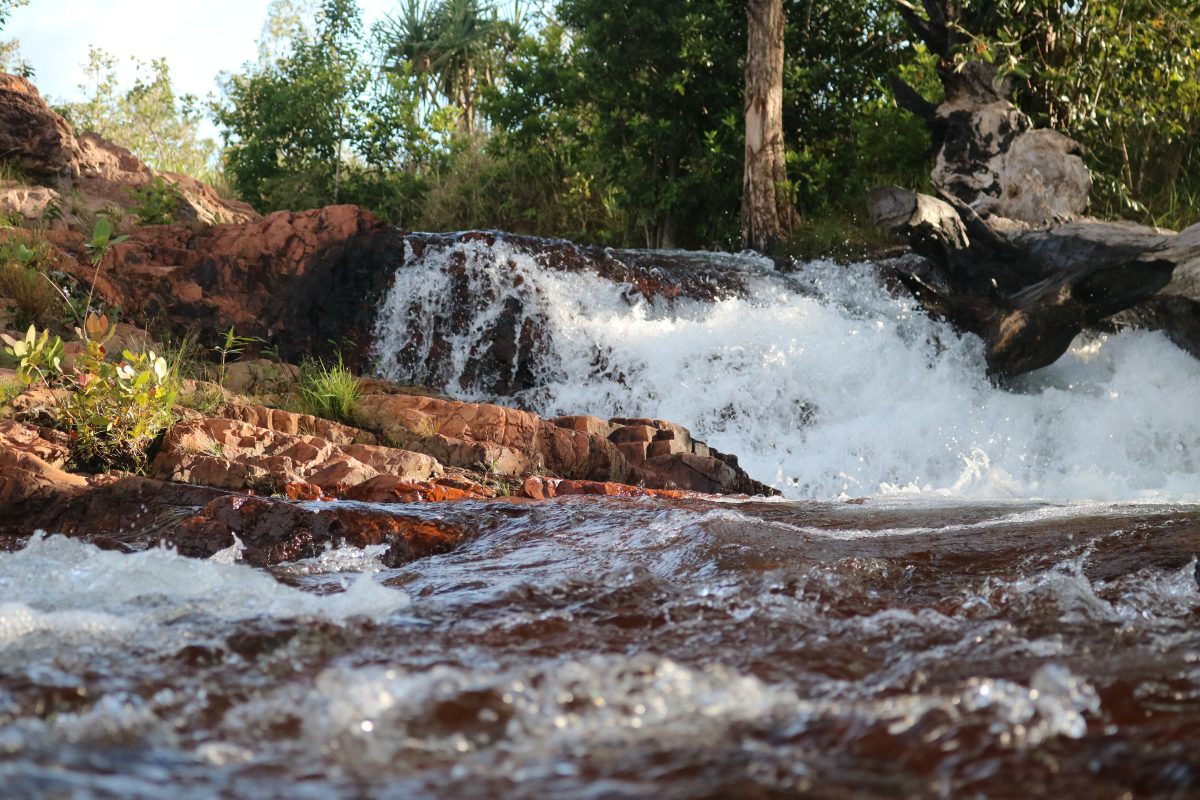
©Photo by Warren Poole on Wiki Commons
The Buley Rockhole is one of the best places to swim in the Litchfield National Park. This area is incredibly relaxing, and if you’re there at the right time you may get a rockpool all to yourself. There’s a series of cascading pools flowing down from the stream, creating small pools that will fit a few friends who want to relax and cool off.
These aren’t the kinds of pools where you can be incredibly active. Instead, find a comfy spot, sit back, and completely relax in the crystal-clear waters. It’s the perfect antidote to the hot Australian sun. Just make sure you bring plenty of sunscreens because it can get hot despite the shady trees.
Visiting cities in Australia can make you forget just how stark and harsh the natural landscape can be. By spending time at the Litchfield National Park, you’ll get to see a side of Australia that’s a world away from the cities, and infinitely rewarding.

